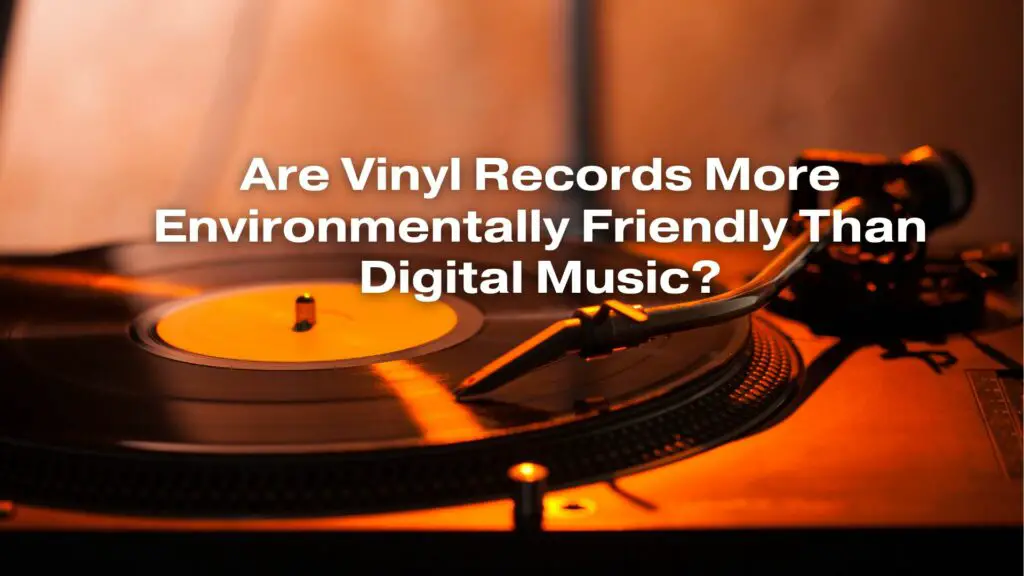The environmental impact of vinyl records versus digital music is a complex and multifaceted issue. Both formats have their environmental pros and cons, and the overall impact depends on various factors. Here’s an overview of the environmental considerations for each format:
Vinyl Records:
- Manufacturing: Vinyl records are made from PVC (polyvinyl chloride), a type of plastic. The production of PVC involves the use of petroleum and energy, and it can release harmful chemicals during manufacturing.
- Packaging: Vinyl records often come with cardboard packaging, which is typically recyclable. However, the production and disposal of cardboard packaging have their own environmental impacts.
- Longevity: Vinyl records can last for decades or even centuries if well cared for. They are a durable format that can be enjoyed for a long time, potentially reducing the need for reissues or replacements.
- Playback Equipment: Vinyl records require turntables and speakers, which consume energy and materials during production. However, quality audio equipment can last a long time, contributing to a longer-term, sustainable listening experience.
- Transportation: Vinyl records are relatively heavy and require more energy for shipping, compared to digital music that can be instantly delivered over the internet.
Digital Music:
- Manufacturing: Digital music files do not involve the physical manufacturing of a product, which reduces the use of materials and energy associated with vinyl production.
- Distribution: Digital music eliminates the need for physical distribution and transportation, which can have a significant environmental impact. Streaming, downloading, and digital distribution platforms are generally more energy-efficient.
- Storage: Digital music is stored on servers and devices, which consume energy for operation and require electronic components. However, the environmental impact varies depending on factors like data centers’ energy efficiency and the lifespan of devices.
- Streaming Services: Streaming music services have data centers that store and stream music to users. The energy efficiency of these data centers can vary, and streaming large amounts of data can contribute to carbon emissions.
- Obsolescence: Rapid technological advancements can lead to the disposal of outdated devices, contributing to electronic waste. However, advancements also improve the efficiency of new devices, which may have lower energy consumption.
In summary, the environmental impact of vinyl records versus digital music is not definitively one or the other. Vinyl records have a significant impact during production and distribution, but they can be long-lasting and durable, potentially reducing their environmental impact over time. Digital music has a lower impact during manufacturing and distribution, but it involves energy consumption for devices, data centers, and electronic waste concerns.
Ultimately, the choice between vinyl records and digital music should consider various factors, including personal preferences, listening habits, and environmental priorities. You can reduce the environmental impact of both formats by choosing energy-efficient devices, reducing unnecessary consumption, and supporting sustainable practices in the music industry.


